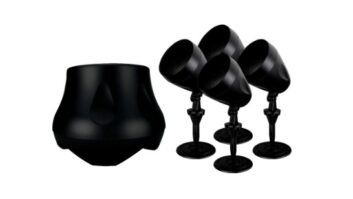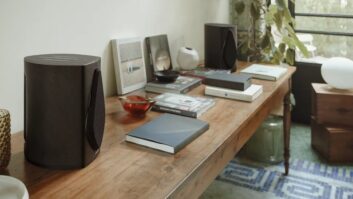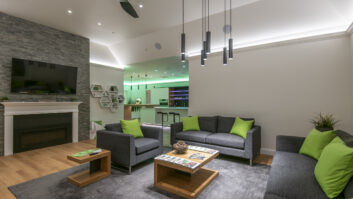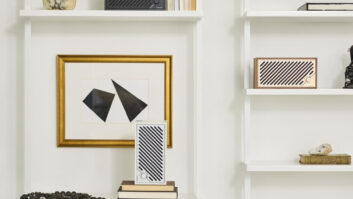NHT dropped its decade-long strategy of offering one series of home theater speakers and a separate speaker series for music listeners.
At CES, the company unveiled eight products that can be used to build an audio system that’s equally adept at playing back music or movie soundtracks, said VP/GM Chris Byrne. Called Evolution, the group consists of only eight SKUs: two three-way satellites, four subwoofer configurations, a mono amp, and a subwoofer processor, all of which can be combined to create up to 12 different surround-sound systems priced roughly from $3,000 to $6,500, Byrne said.
“A small fraction of audio enthusiasts own separate two-channel and multichannel systems,” Bryne noted. “This fraction will further diminish as the market for multichannel music formats such as SACD and DVD-Audio grows.”
The models, due in March, are more attuned to the needs of custom installers, dealers and consumers than the Music series and the Home Theater series that they replace, Byrne added. For consumers interested in flexible and unobtrusive placement, the bookshelf satellites and subwoofer systems are compact, and the satellites (sold singly) use a driver configuration that makes them suitable for horizontal or vertical placement without altering their dispersion pattern.
Because of consumers’ interest in unobtrusive speaker systems, the launch reduces NHT’s selection of tower speakers, whose market share is shrinking in NHT’s specialty and custom channels, Byrne said, because multiple towers in a surround sound system aren’t very appealing. In addition, more people are putting small speakers in furniture, in part because custom installers design AV cabinets to accept bookshelf speakers as well as electronics.
For custom installers and for over-the-counter buyers, NHT included boundary-compensation switches for the first time in its consumer satellites and subs. In the satellites, the switch dials out the midbass bump that occurs when satellites are placed in case goods or custom cabinets. The sub’s boundary control enables placement in corners or in custom or case-goods cabinets.
For dealers, the series reduces the number of SKUs needed in inventory, compared to the two series they replace. In part, the series achieves that goal through the introduction of two powered subwoofers, each one intended to dock with one of the group’s two satellites to create a biamplified tower speaker with integrated powered subwoofer.
In the past, only the discontinued Athena line from Audio Products employed a similar strategy.
Here’s what the series offers:
- two three-way satellites, one with 3-inch midrange and tweeter flanked by twin 5.25-inch woofers, one on top and one on bottom. For larger rooms, a step-up version uses 4-inch midrange and two 6.5-inch woofers.
- two tower-like powered-subwoofer modules. Each subwoofer module is intended to dock with one of the two new satellites to create a biamplified tower speaker.
For the smaller satellite, the subwoofer module features a 12-inch driver. For the larger satellite, the second module features two side-firing 12-inch drivers. A wire-management system simplifies connections between the subs and sats.
Each tower module comes with an outboard 250-watt mono amp and separate subwoofer processor, which features crossover, EQ, and boundary-compensation controls. The boxes are 1.74-inches tall and are rack-mountable. They feature balanced and line inputs.
- two two-enclosure powered-subwoofer systems. Each system consists of two separate subwoofer enclosures; one system is for medium-size rooms, the other for larger rooms.
The use of two enclosures helps eliminate room cancellations that could occur when only one subwoofer is used, Byrne said. The effect will be to smooth out response.
Both subwoofer systems come with 250-watt mono amp and outboard subwoofer processor. Multiple amps can be used with each system.
One system features 13-inches-square enclosure with single 12-inch driver; it’s small enough to sit inside cabinets with isolation feet. The second system uses a 20-inch-tall enclosure with a 12-inch driver on each side, making it unsuitable for cabinet installation.













